Ivana Rinchenbachová
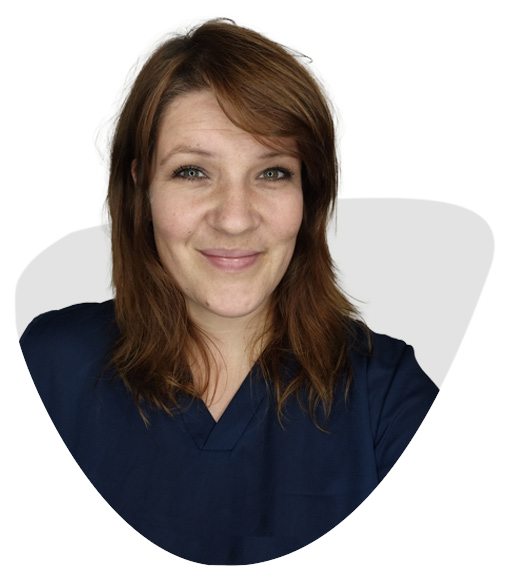
She is well-known on her Instagram profile for her focus on hair microscopy, studying the effects of various products and processes on hair structure. This almost scientific approach to hair brings a wealth of new information that can be applied to everyday work in salons. Our PR manager, Natalia, had a conversation with Ivana to find out how it all started and how looking through a microscope has changed Ivana's approach not only to her clients' hair but also to her own.

In the Czech Republic, you are unique in that you examine hair under a microscope and dedicate a significant portion of your Instagram content to this. How did you come across the microscope, and how did this idea come to you?
I discovered this a few years ago when I watched a video with Nina Krajčo, who was talking about hair microscopy, and I was incredibly excited by it. I thought it was a great idea and exactly what I wanted to do, but at the time, it seemed like an unattainable and completely unrealistic thought. Coincidentally, my mom, who has always been extremely supportive of my work, was there with me, and she came up with the idea for the whole family to pitch in for my first microscope as a Christmas gift. After that, I fully immersed myself in it. I immediately took samples from everyone in the family and began my first hair examinations. That was in 2017.

So you’ve been examining hair under the microscope for over 6 years now, and you’re still passionate about it? Is there still more to discover?
Yes, every time I think I've seen it all, that there’s no more room to grow or discover, something comes along that reveals something new. Very often, I decide to examine a specific thing, and in the end, something entirely different emerges. For example, I was recently testing the effects of UV radiation on hair and discovered something else incredibly interesting: the difference between natural and cosmetic pigments in the hair, which I hadn't even planned to study.
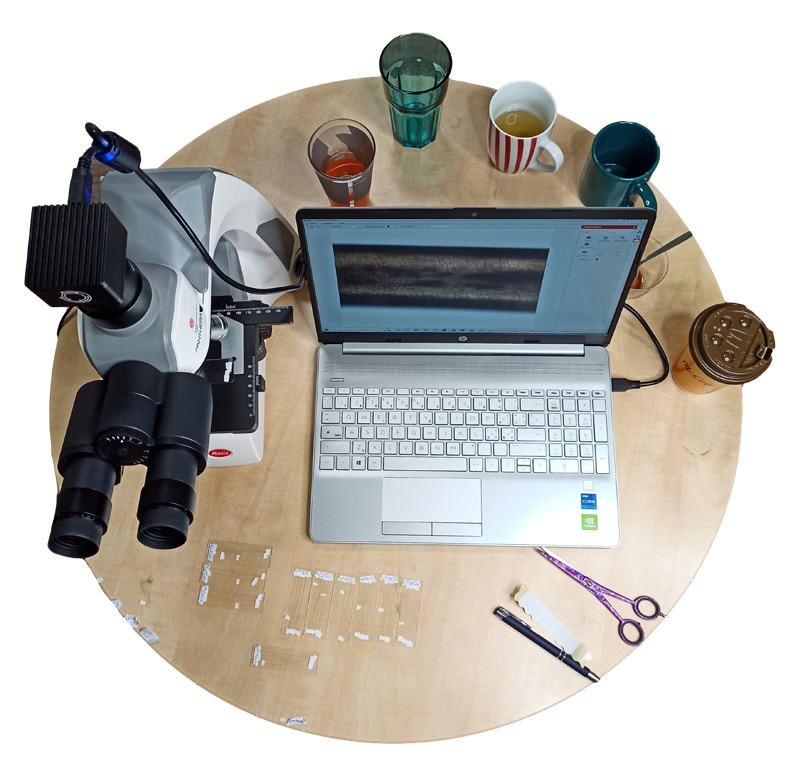

And what did you discover about those pigments?
I initially aimed to map out the damage caused by UV radiation. We know in general that it's harmful to hair, and I was curious if there would be any visible changes in the hair. I prepared a variety of samples—natural hair, dyed hair, hair with a gloss treatment—and divided them into two groups: one group with UV protection products and the other without, then exposed them to sunlight. As expected, there was a difference between the samples with UV protection and those without. However, what really surprised me was that the pigment faded much faster from untreated natural hair than from the cosmetic pigment in dyed hair. I didn't expect that because color fading is usually a concern for clients with dyed hair, while those with natural hair don't worry about it and often don't use UV protection. Yet, natural pigment fades faster in the sun than gloss or dye.

That's your most recent discovery. Do you remember what the first one was? What surprised you when you first started working with the microscope?
The very first major experiment was when I tested whether there was a difference between hair cut with paper scissors versus professional hairdressing scissors. I had read in a discussion that going to a hairdresser for a haircut is unnecessary and that one can safely cut their hair at home. So, I tested the cut with two different tools on one of my own hairs, and the difference was immediately visible. I posted the results in that Facebook group, but I didn’t have much success because the women there argued that they had new office scissors specifically for cutting hair (so they should be sharp enough) and that hair shouldn’t be split with them. So, I did further testing, bought brand-new unused office scissors, and cut half of my hair with these new paper scissors and the other half with professional hairdressing scissors. I was interested in how the hair would behave not only immediately after the cut but also over a longer period. After 3 weeks, I took samples from each side and saw an enormous difference.
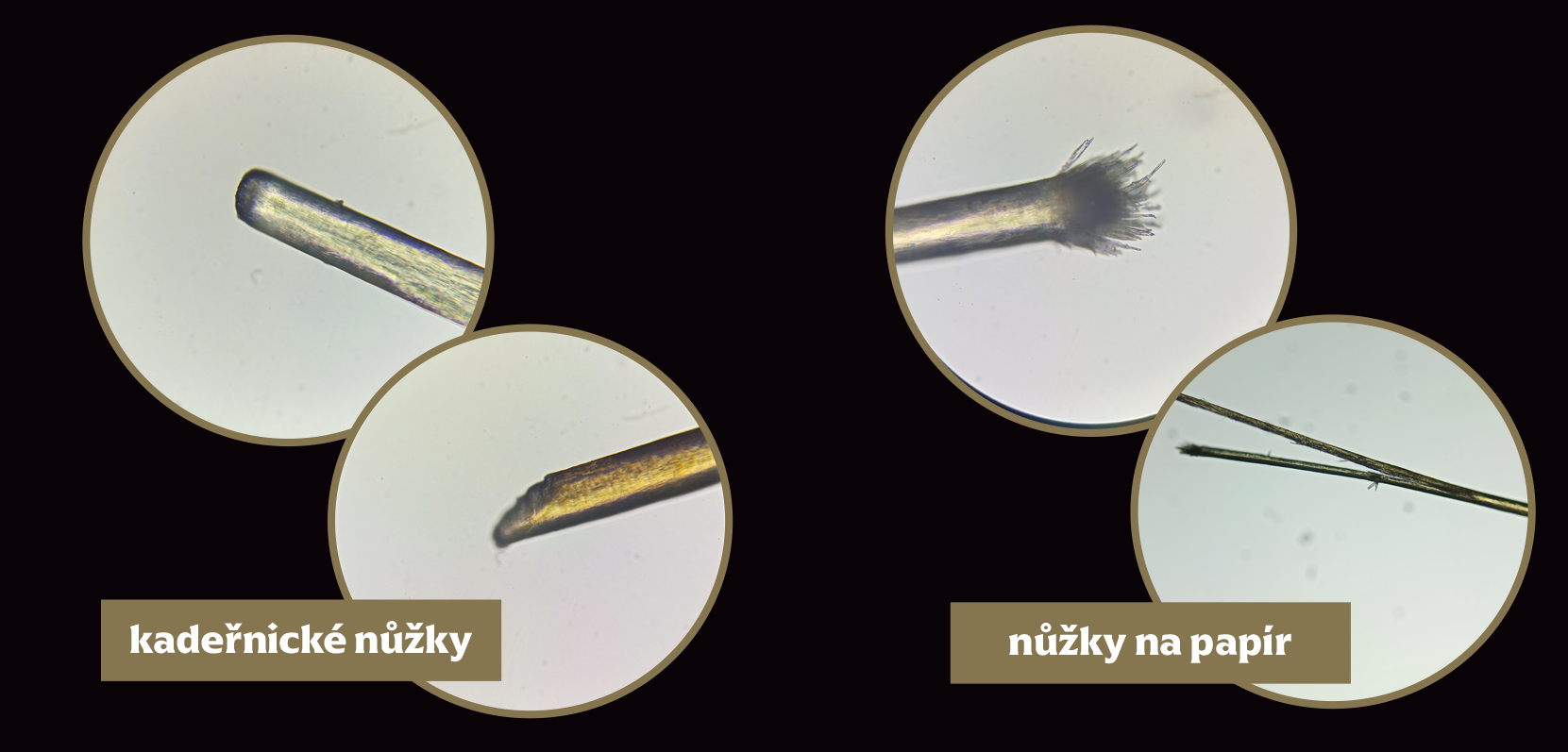

It’s clear that you not only enjoy it but also gain a lot of information about hair. What has enriched you the most over the years?
When I started researching in 2018, I was surprised by how little information there was about hair structure and composition. The first year, I spent just looking through the microscope without knowing what I was seeing: different structures, dark black spots, and so on. I couldn’t find anywhere what these things meant. I was very interested in how hair behaves in different situations, primarily to understand what I could safely do in my hairdressing practice. I also wanted to know how to approach hair during chemical treatments to maintain its highest quality. One thing that greatly enriched me was mapping out that there are longitudinal and transverse cracks in hair, and there is a significant difference between them. Longitudinal cracks often result from chemical damage, while transverse cracks most commonly occur in clients with untreated hair, caused by inadequate care and mechanical stress. This helped me understand why clients with natural hair come in with split ends. Knowing this, I can explain it better to clients and set up appropriate care.

So, with the microscope, you also set up home care recommendations for clients?
It’s not that I necessarily need it, but it definitely helps. At the beginning, the most important thing for me is the consultation and elasticity test. I don’t take samples from every client, but only from those with an interesting hair history. Recently, I had a new client whose hair looked quite normal, but I still took samples after using Malibu C. Under the microscope, it was clear how all the buildup had been removed, and a large number of tiny cracks in the hair were revealed. During the consultation, we discovered that the client was using only a leave-in conditioner and not a regular conditioner, which was clearly insufficient. So, I use the microscope mainly to make visible things that I often suspect are happening with the hair.
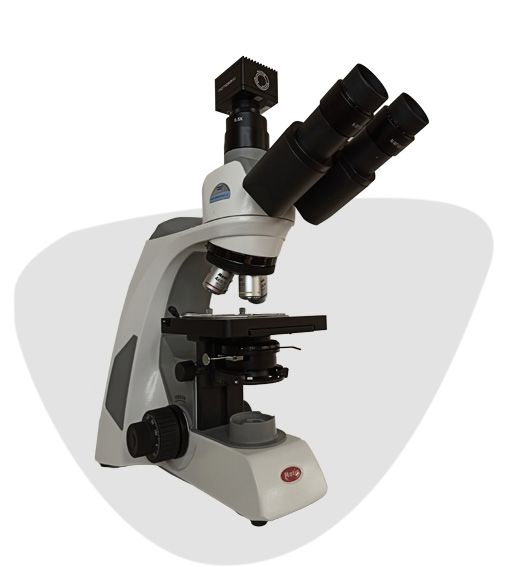

You study the effects of hair care products under the microscope over the long term and use that information to explain things better to your clients. What has impressed you the most from the products you’ve examined recently?

One product that comes to mind is the K18 mask. I like that it’s simple, contains plenty of effective ingredients, and doesn’t have any unnecessary components. I’ve seen very nice results with it, even on severely damaged hair with many cracks. In the past, I used to examine hair by pulling out one strand, applying the product or performing a treatment, then pulling out another strand to photograph it. Now, I’ve learned to test everything on a single strand to clearly see the before and after results. This approach worked beautifully with K18, where I documented a significant improvement. The strand initially had a lot of cracks, but after applying the K18 mask, it was evident that the hair improved: the cracks were substantially smaller, and areas that were previously split seemed to be closed up.

On your profile, you often focus on clarifying shampoos and what they can do for hair. What have you examined about them under the microscope?
I love the Un Do Goo shampoo; it’s one of my favorite products, and I use it quite often. It’s also transparent, which makes it ideal for experiments because the microscope can easily illuminate it. 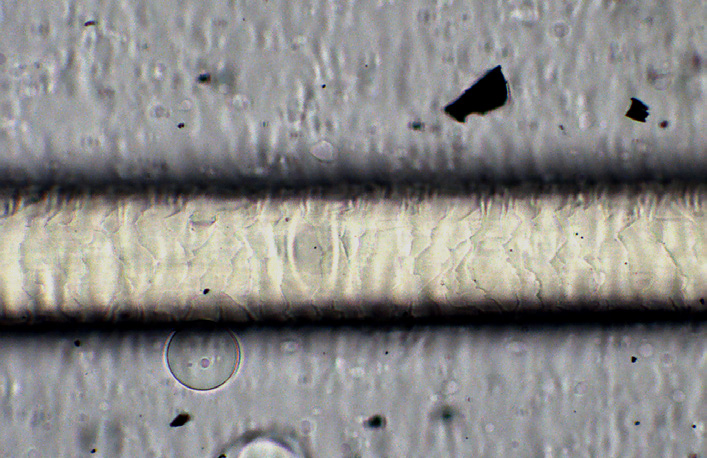 However, since there is a big trend towards cleansing hair, people tend to overdo it, unfortunately even with clarifying shampoos. I’ve encountered several clients who overused Un Do Goo, using it excessively and damaging their hair (especially the ends) due to its high pH. Under the microscope, it’s clearly visible that when you apply Un Do Goo to hair, the cuticle opens up to the maximum, and when you move the hair, the cuticle flakes break off. When I think about a client who doesn’t handle this shampoo carefully, it’s clear that damage can occur. That’s why I was excited about K18 with its Detox Shampoo. It also shows beautifully how the hair is cleaned and the cuticle opens, but not as extremely, so it’s less prone to damage. This option is safer for clients than Un Do Goo, which I recommend for salon use. The Detox Shampoo can be confidently recommended for home use without worrying that clients might damage their hair through incorrect application.
However, since there is a big trend towards cleansing hair, people tend to overdo it, unfortunately even with clarifying shampoos. I’ve encountered several clients who overused Un Do Goo, using it excessively and damaging their hair (especially the ends) due to its high pH. Under the microscope, it’s clearly visible that when you apply Un Do Goo to hair, the cuticle opens up to the maximum, and when you move the hair, the cuticle flakes break off. When I think about a client who doesn’t handle this shampoo carefully, it’s clear that damage can occur. That’s why I was excited about K18 with its Detox Shampoo. It also shows beautifully how the hair is cleaned and the cuticle opens, but not as extremely, so it’s less prone to damage. This option is safer for clients than Un Do Goo, which I recommend for salon use. The Detox Shampoo can be confidently recommended for home use without worrying that clients might damage their hair through incorrect application.

If you had to highlight just one thing that the microscope has taught you, what would it be?
Prevention is key! Thanks to the microscope, I’ve realized how crucial it is to properly care for hair because once it’s damaged, it cannot be completely repaired. It’s essential to have the right care regimen, including shampoo, conditioner, and styling products. Personally, I used to skip styling products and was quite casual about it, but I’ve learned how important styling is. When hair isn’t protected, it quickly becomes stressed and damaged. Once damaged, it can’t be restored to a completely healthy state. Once there’s a gap in the cuticle, it stays in some form and can’t be sealed. So, the best option is to protect the hair and provide proper care. That’s why I now emphasize the importance of my clients using high-quality and well-adjusted care—before the hair gets damaged. So prevention, prevention, and more prevention!
